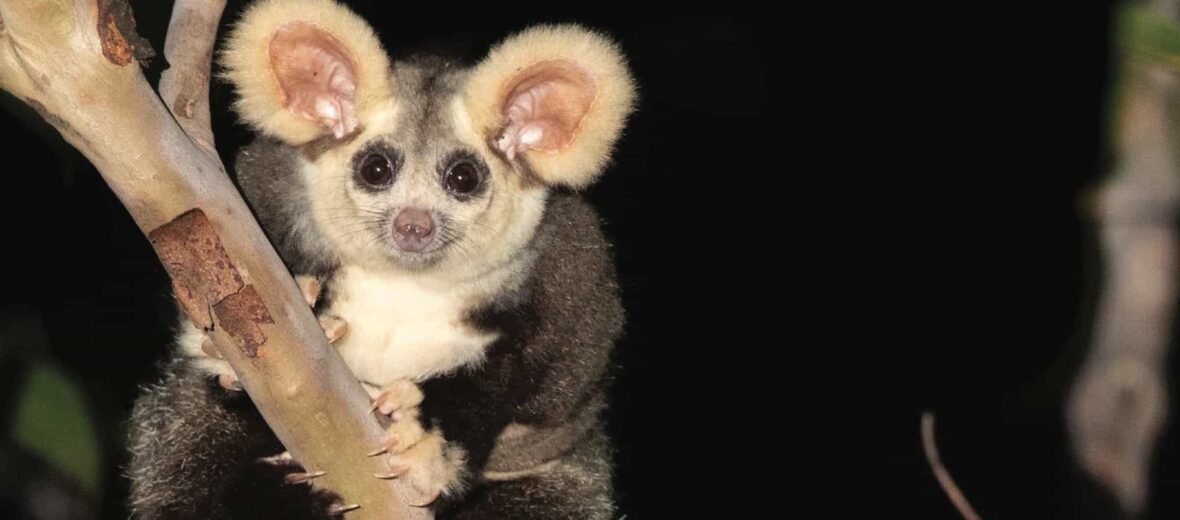
Enter the greater glider; the marsupial with an awkward clumsy walk while on the ground. Although it may walk awkwardly, it can glide very gracefully from tree to tree. It does so via the use of a membrane that spreads from it’s elbows to its ankles. They also move about in the trees with ease. On hot days, they will lick their fur to lose heat through evaporation. They are listed as Threatened by the IUCN due to habitat loss at the hands of deforestation.
First the Stats…
Scientific name: Petauroides volans
Weight: Up to 2.8 lbs.
Length: Up to 17 inches, plus a 24 inch tail
Lifespan: Up to 15 years
Now on to the Facts!
1.) Unlike other possums, these critters lack the prehensile tail ability.
2.) They manage up to 20 tree-trunk dens at a time.
3.) The greater glider is the largest known arboreal (lives in trees) species within the ringtail possum family.
4.) These fascinating critters are nocturnal (active at night).
5.) They can be found in eucalyptus forests of eastern Australia, from Mossman, Queensland to Daylesford, Victoria.
But wait, there’s more on greater glider!
6.) Males and females will typically share a den from the beginning of breeding till the young emerge from the pouch.
7.) Breeding season starts in March, resulting in a single joey being born around April – June.
Did you know…?
The greater glider can glide up to 600 feet at a time!
8.) They are, like all possums, marsupial (baby is reared in the mother’s pouch or marsupium).
9.) These critters have 5 toes on each foot. The 1st toe on the hind foot, and the first 2 toes on the fore foot are opposable. This allows for better grip in the trees.
10.) Most greater gliders are polygynous (1 male mates with several females). However, some are monogamous (mate for life).
Now a Short Greater Glider Video!
Also, check out the Critter Science YouTube channel. Videos added frequently!
Want to suggest a critter for me to write about? Let me know here.



